This week, smells, pheromones and anosmia. We talk to a patient with no sense of smell, hear why odours might be more down to the way molecules vibrate that how they are shaped, we look at the role that genes play in what we can smell and hear how pheromones affect how we feel. Plus, in the news, the legacy of double Nobel laureate Fred Sanger who died this week, a new water-repelling material which rejects water faster than ever before, an ode to World Toilet Day, the swarm of tiny satellites which are helping to miniaturise space missions, and we hear about the bacteria that have acquired mammoth genes from an old bone...
In this episode
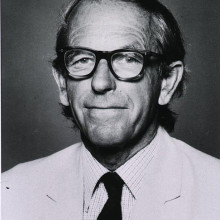
01:20 - Remembering Fred Sanger
Remembering Fred Sanger
Fred Sanger, the British biochemist who won two Nobel Prizes, died this week on  Tuesday 19 November 2013, aged 95. Known as the "father of genomics," he developed methods which allow us to determine the structure of proteins and the order of the building blocks of DNA.
Tuesday 19 November 2013, aged 95. Known as the "father of genomics," he developed methods which allow us to determine the structure of proteins and the order of the building blocks of DNA.
Kate Lamble was joined by Professor Tim Hubbard from Kings College London to talk about his work and legacy.
Kate - Fred was one of only four people ever to win two Nobel Prizes. Why was his work so important?
Tim - So, you have to think back to the '40s and '50s when it wasn't even realized that biology was digital. So, you had proteins and it wasn't even clear that they were actually linear sequences of amino acids. So Fred Sanger determined the first protein insulin and showed it was a linear sequence - if you have a lot whole collection of insulin molecules, they're all the same.
Kate - What do you mean by digital? Most of us think of biology as being the study of what's actually there in front of us.
Tim - Well, digital in the sense that it's all about polypeptides. You have these long chains of sequences. You have long chains of sequences of protein and later on, this is before the structure of DNA was solved. It was realised that DNA encodes the sequence that specifies how to make those proteins. DNA is also a long molecule and Fred Sanger developed the best method for sequencing that and that method went on to being used right up to the sequencing of the human genome in 2000.
Kate - We sort of take it for granted nowadays that we can just sequence DNA. How revolutionary a thought processes, was this at the time?
Tim - It's revolutionary in the sense that the really difficult process of sequencing proteins was much, much faster to sequence DNA and that's just got faster and faster over time, such that now, you can sequence a whole human genome on a single machine in 24 hours. It will get faster still and the applications in healthcare, of being able to sequence everybody eventually, eventually is enormous.
Kate - We sort of know the names of Watson and Crick, they're household names for the discovery of DNA. Why isn't Sanger (in my experience) a household name?
Tim - Well, I think he didn't want to do that kind of stuff. He was much more interested in the quite practical things of just doing science. In fact, when he was asked would the Sanger Institutethat was sequencing the human genome, did he want it to be named after him. He said, that was okay, "but it had better be good."
Kate - Perfect answer. You were telling me just outside a little bit earlier on, everything he needed to do if he want to do another project had to be three times better.
Tim - Well, I think that's a story I was told and if you look at the size of the first virus and then the mitochondria and then the next thing, they were each roughly three times bigger. It does show the kind of progression of sequencing technology. It's just got faster and faster, and will go on getting faster and faster, and cheaper and cheaper.
Kate - So, we're using his discoveries now more and more. Do you think his work will carry on being important over the next 10, 15, 20 years?
Tim - Yeah. I mean, the sequence of the human genome is completely fundamental. It's changed the way biology is being done, the way healthcare is being developed. It all relates back to these original methods developed to work out how you could sequence DNA.

04:33 - Super-water-repelling surfaces
Super-water-repelling surfaces
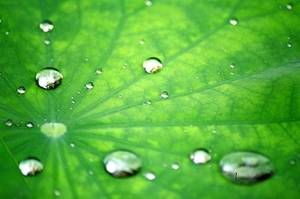 A surface has been designed that stays drier that even through possible- but it turns out nature got there first!
A surface has been designed that stays drier that even through possible- but it turns out nature got there first!
For a surface to stay as dry as possible, water droplets need to bounce off it in the shortest time. A team from Boston University and MIT used a high speed camera to watch a drop bounce off a hydrophobic surface, and saw that it bounced symmetrically- it hit the surface, spread out, and then recoiled towards the centre before leaving the surface again. This means the centre of the drop stays still whilst the rest is moving.
They wondered if they could make the drop recoil faster by using the liquid in the centre - and to do that they would have to make it bounce asymmetrically. They designed a surface with ridges in it, which make part of the droplet thinner. This thin part recoils faster, so breaking the drop into small droplets, and decreasing the time it is in contact with the surface. Where the droplet hits the surface is important- when it lands directly on the ridge the contact time is shortest.
The lotus leaf has long been the gold standard for water-repellent surfaces, but it turns out there are surfaces in nature that use this technique and are even better. The wings of the Morpho butterfly and the leaves of the nasturtium plant both have ridges or veins which help keep them dry.
This could have important impacts for materials scientists. Molten tin drops are able to bounce off these surfaces before solidifying. This suggests that they could be useful for surfaces exposed to freezing rain, to prevent ice forming on them, which is particularly important for aeroplanes.

07:03 - World Toilet Day
World Toilet Day
The 19th November was World Toilet Day. Established in 2001, the event seeks to draw attention to global sanitation and health problems associated  with a lack of toilets, and break the taboo associated with the topic. Here's your quick fire science on sanitation and the humble toilet, with Simon Bishop and Dominic Ford.
with a lack of toilets, and break the taboo associated with the topic. Here's your quick fire science on sanitation and the humble toilet, with Simon Bishop and Dominic Ford.
- In 2002, the United Nations launched 8 goals for long term global development that they wanted to prioritise. Part of the goals was to halve the number of people without access to basic sanitation, such as septic tanks and private covered latrines, by 2015.
- But, as of 2011, 2.5 billion people still lacked access to these facilities, having to use an uncovered pit latrine, or just an open hole in the ground, as a toilet. That means that across the world only 4.5 billion people have access to a toilet. On the other hand, 6 billion people have access to a mobile phone.
- Lack of sanitation can mean that raw sewage comes into contact with drinking water, leading to widespread infectious disease. More people are killed by diarrhoea every year than AIDS, malaria and measles combined.
- Diarrhoea is caused by bacteria, viruses and single-celled animals called protozoa. It causes fluid loss and dehydration, which can be fatal. To avoid the problem entirely, community-wide sanitation is needed, as well as encouraging hand washing with soap.
- In the UK, engineers may have saved more lives over history than medics - even the British Medical Journal chose the 'sanitary revolution' as the greatest medical advance since 1840.
- This was when Edwin Chadwick, a lawyer frustrated that infectious diseases were straining British finances, pioneered the introduction of piped water to people's homes and sewers rinsed by water.
- One solution is to seed septic tanks with bacteria to break down human waste. A bacterial group called Geobacter break down sewage and store electrical charge at the same time, turning faeces into batteries.
- The recently established Reinvent the Toilet challenge seeks researchers to design cheap-to-use, self-cleaning toilets to be used in areas without water, sewage or electricity. So far, this has funded projects to build solar powered toilets, and even microwave-powered waste disposal units.
- And, for just £60, you can always twin your toilet at home with one in an area of need around the world.
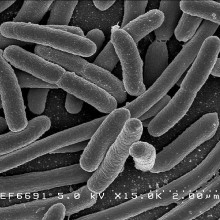
09:49 - Bacteria: taking up ancient DNA
Bacteria: taking up ancient DNA
with Prof Eske Willerslev, Copenhagen University
Short and damaged DNA fragments are found pretty much everywhere and in some environments can survive more than half a million years. But this week a paper published in PNAS showed that bacteria can pick up these stray DNA sequences from their environment and incorporate it into their genomes, even DNA from a 43,000 year old woolly mammoth bone.To find out more we're joined by Eske Willerslev from the Center for GeoGenetics at the University of Copenhagen.
Eske - We wanted to investigate if bacteria can actually incorporate all the 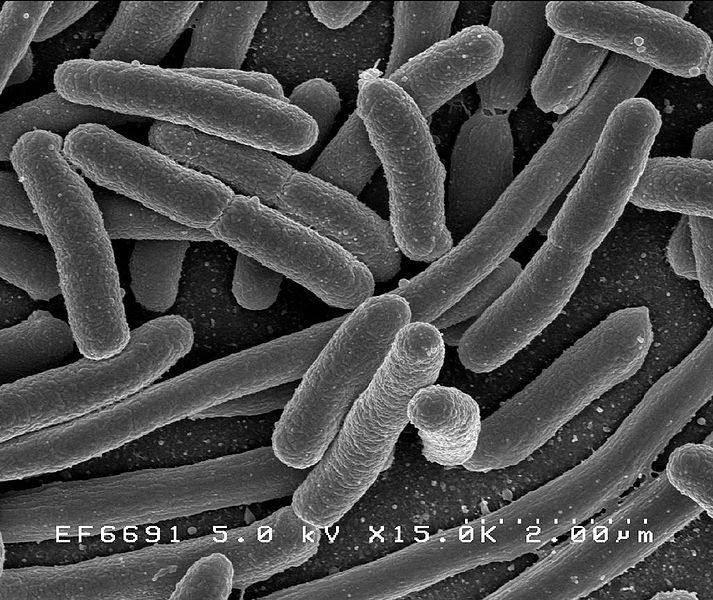 broken DNA, all the damaged DNA that is in the surroundings, if that can be incorporated into the genomes. Obviously, we have known for a long time that long stretches of DNA from two bacteria that are very closely related can actually be swapped between the cells. But it was unknown whether you can say very short and very damaged DNA such as ancient DNA can actually be incorporated into the bacteria genome. This is what we show was possible in the PNAS paper.
broken DNA, all the damaged DNA that is in the surroundings, if that can be incorporated into the genomes. Obviously, we have known for a long time that long stretches of DNA from two bacteria that are very closely related can actually be swapped between the cells. But it was unknown whether you can say very short and very damaged DNA such as ancient DNA can actually be incorporated into the bacteria genome. This is what we show was possible in the PNAS paper.
Ginny - So, how did the bacteria actually pick up these bits of DNA?
Eske - It seems like it's actually happening more or less spontaneously. So, we think when they eat, some of that DNA can then be incorporated into genomes.
Ginny - Why would they want to do that? Is this useful for them in some way?
Eske - Yeah, it's a good question. You can say, the interesting part here I think is that in principle, that allows for the bacteria to get to stages that might had been lost even for thousands of years. For example let's say, antibiotic resistance and in this case, a bacteria can actually, by taking up a very short piece of DNA become antibiotic resistant.
Ginny - So, does this have an impact on the way we deal with antibiotic-resistant bacteria? So, at the moment, I know there's lots of constraints around medical waste, but they don't have to make sure that the DNA is completely destroyed as far as I know.
Eske - Exactly. I think this is something that this should be investigated further because as you rightfully point out, at hospitals, I mean, people are taking a lot of care to try killing off bacteria on surfaces. But obviously, with alcohol, that doesn't destroy the DNA totally. And that means then in principle, you can say, antibiotic-resistant bacteria that has been on surfaces, had been killed off then a new group of bacteria can come and actually incorporate some of their damaged DNA after even weeks or months, incorporate that into the genomes and then becoming resistant that way. I mean, one of the big questions, of course, that still remains is, how often does this happen in nature? I mean, certainly we know now that it can happen, that it's possible, and it's also possible you can say with the bacteria that we know are out there in the environment. But it's still an open question, how often do they really happen in nature?
Ginny - So, we talked about this DNA being damaged. Does that not have a negative effect on bacteria that pick it up if there's something wrong with the DNA?
Eske - Well, it doesn't seem to be the case and this was one of the really surprising discoveries. I mean first, we tried with very fragmented DNA and was also surprised that they could take up even things like 20 base pair pieces. But when we additionally introduced a lot of different types of damages, I mean, it was a big surprise for us that they actually take it up anyways. It doesn't seem to hold them back. And then finally, we did the experiment with a ground up woolly mammoth's bone and this was just to show that it's not only DNA which has been artificially damaged, or artificially shortened that if we actually use some DNA with just truly ancient, truly damaged then the bacteria can still take it up.
Ginny - Is there a lot of this ancient woolly mammoth type DNA lying around in the real world? Is this something we should actually be worried about?
Eske - Yes, there is a lot of it hanging around. I don't think the most interesting thing though is the mammoth DNA really because what's much more important is that there is chance of ancient bacteria DNA hanging around in the environment. And that bacteria DNA will be potential source for being incorporated into living bacteria. So, if you imagine along river banks, along the surfaces of land masses, etc. We all the time get ancient sediments being released out in the ocean, out in the water, etc and will definitely will release tremendous amounts of ancient bacteria DNA. The question is then, to what extent do this ancient bacteria DNA come into play?

15:08 - The Smallest Satellite Ever Launched
The Smallest Satellite Ever Launched
This week a Dnepr rocket launched from Russia broke the record for the most payloads delivered to orbit in a single mission, launching 32 different objects into space. The day before, a US rocket delivered 29 satellites into orbit. But why are we launching so many objects into space?
While it may seem like large number most of these objects were CubeSats - tiny satellites with the same volume (1 litre) as a fruit juice carton.
These satellites offer a relatively cheap way to test new equipment and technology in space, by filling up the normally small amount of space left in a rocket after a major payload has been loaded. Although it's estimated that each CubeSat costs $40,000 in fuel, when you compare this to the $115 million cost of a rocket it does seem an economical way to allow students and other educational groups an opportunity to test out what could prove to be the future of space travel.
CubeSats are ejected from a rocket when the nose cone breaks off. Although they don't have thrusters, they are travelling at a sufficiently high speed to enter a low earth orbit, where they can remain for around a month before friction with the Earth's atmosphere causes them to slow down and burn up as they fall back to Earth.
As part of the launch this week, the world's smallest ever functioning satellite, a temperature sensor called the Pocket PUCP Sensor, was deployed. At 8cm long and weighing only 97g it offers an opportunity to miniaturise existing technology which could save fuel and cost on future missions.
British involvement in the CubeSats launched included Funcube1, which school children can receive messages from using only a USB dongle and a small aerial; the Cinema 2 and 3 satellites, which Imperial College London has developed, and a mini-magnetometer called Magic for to study the Earth's magnetic field.
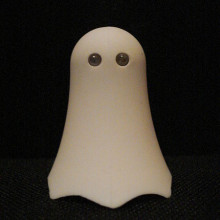
16:49 - False memories
False memories
 Researchers at the university of California have found that even individuals with highly superior autobiographical memory fall for tricks designed to produce false memories.
Researchers at the university of California have found that even individuals with highly superior autobiographical memory fall for tricks designed to produce false memories.
It has been known for a long time that the human memory isn't particularly accurate. When we remember something, it's not just like playing back a film clip- we have to reconstruct the event, and this give opportunity for false memories. But for the first time, this study, published in PNAS, has tested people with astonishing memories for their own lives.
This group of people can recall events that happened on any given day of their life, from mid-childhood. They can remember what day a given date falls on, what they had for lunch that day, and any big events that occurred. For facts that can be checked, they are right 97% of the time. But it turns out that having such an amazing memory doesn't make you immune to false memories.
One of the classic ways of producing a false memory is to give people a list of related words, but miss out the most obvious word they all link to-so you might say: sugar, sour, honey, candy, but not say sweet. When asked to remember the words, a high proportion of people will say that sweet was presented, and be very confident about that answer. This study found that the 'super-rememberers' were just as likely to be fooled by this task as normal controls.
They also tried several other false-memory tasks: for one they showed participants a video followed by them reading a story about the video in which some of the details had changed; in another they asked them about real events for which there was no video footage- commonly people report seeing it anyway.
In all the tests they used, the super-rememberers were just as likely to be fooled as the control participants, and in some circumstances, more likely. This is important because it suggests that they use the same process as everyone else when remembering things, despite their incredible ability. There must be little or no mis-information about their lives, which allows them to give such reliable answers normally.
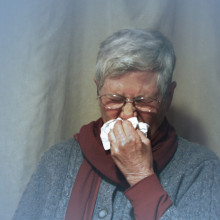
19:51 - Losing your sense of smell
Losing your sense of smell
with Duncan Boak, Fifth Sense
Smell is a poorly understood sense, often thought to be less important that sight, or hearing. But strong links with the emotional centres of our brains mean that it is important in ways you might never have imagined...
Most of us will have experienced a temporary form of anosmia, or the loss of smell, whilst suffering from a cold, but what would it be like to lose the sense permanently? Duncan Boak, an anosmia sufferer himself, set up the UKs first charitable organisation supporting smell and taste disorder sufferers- the Fifth Sense. Ginny Smith met up with him at the Cambridge Science Centre's to find out more about the disorder.
Duncan - It's quite a common condition, more common than people think. But obviously, if you saw someone in the street who's got no sense of smell, you wouldn't know, would you? There are lots of different things that cause it - head injury, the common cold, chronic sinusitis, and some people are even born with no sense of smell.
Ginny - Is that something you suffer from yourself?
Duncan - Yes, I lost my sense of smell in 2005 after suffering quite severe head injury.
Ginny - Did you sort of wake up after having been knocked out with this head injury and just suddenly couldn't smell things?
Duncan - Well, I was in a hospital for a week, got out of hospital and the first time I noticed it was the first proper meal I'd eaten after getting out of hospital was a risotto my dad had made and I was having a glass of wine with it. I was eating and drinking and thinking, this doesn't really taste of anything. There's no flavour and it was sort of as a result of that and after that, I realized I actually couldn't smell anything at all.
Ginny - So, what was it like when you realised that? Did it feel like there was something missing in your life?
Duncan - Not at first, no. I went to my doctors to tell them about it and see what they'd say. The response I got was, "Oh, yeah. I've heard about this, it's happened before after a head injury. We don't know much about the sense of smell. There's no treatment available, in fact there are no cures at all. It might come back of its own accord, but if it doesn't, well that's it. You'll just have to get on with it. At least it's only your sense of smell. It could've been worse." And that was my attitude really. After that, I thought well, I've been told nothing can be done. I'm not even going to think about it. I suppose I buried my head in the sand.
Ginny - I think that will probably be a lot of people's reaction that of all the senses, smell would probably be one of the least important to lose. I mean, you think of dogs needing a sense of smell, but humans, we don't seem to use it that much.
Duncan - I was aware of lots of ways in which my sort of life had changed over the years following the accident and could never really work out why. Basically nothing in my life was as enjoyable or as rich, as colourful, as vivid any experience as it was before. It wasn't until years later in 2011 and reading a book about someone elses experience that I actually started to learn about this and learn what the sense of smell actually did for me in the first place. That up until that point, I'd never even thought about. The thing about smell is, it works on a very sort of deep and quite a complex level. It's very much involved with our emotions, memory, with mood, and it's involved in all sorts of different aspects of life, but not in a way we'd ever really appreciate unless we thought about it.
Ginny - So, do we know how many people are affected by these sort of disorders?
Duncan - There's never been any sort of study done in the UK to establish the prevalence of anosmia. That's something fifth sense is looking to do in due course. We're reliant on estimates that have come from European and American studies which suggest that around 5% of the population are affected by loss of the sense of smell, whether total or severe reduction in. Fifth sense actually recently did a survey of all its members to establish and get some figures and get some data for the quality of life impact of smell disorders, smell loss. 50% of people surveyed say they suffer from depression, 60% said they've experienced feelings of isolation, feeling cut-off from friends and family, and 65% said it's really affected their relationship with partners, families and friends.
Ginny - Wow! That's not good numbers. Is there anything that can be done to help sufferers? Is there any way of making the loss of smell better or just making the quality of life better?
Duncan - The interesting thing is, there are potentially treatments available. Now, treatment largely depends upon the cause. In my case, head injury, it can be down to two main reasons. One of which being damage to the frontal lobes of the brain itself. If that's the case, then it's unlikely that it will never return. However, there are cases even then where people have spontaneously almost, got their sense of smell back after 10 years, there are stories like that.
But for people with sinus problems, for people who've suffered smell loss as a result of say, a cold, there are potentially things that can be done. Fifth Sense is working with the sort of handful of leading medical specialists in the UK who have an interest in diagnosing and treating patients with smell and taste disorders. One of which is Mr. Carl Philpott who runs the UK's first NHS Clinic specialising in smell and taste disorders. Now, Mr. Philpott has said that of the patients that have been through his clinic, about 75% of them have a potentially treatable problem. Most people though will go to their doctors and are told that nothing can be done. So, one of the important things that Fifth Sense is doing is acting as a signpost to these medical specialists for people. Sort of saying, "Look, these guys are out there and treating people. Speak to your GP. Try and get a referral to them and perhaps something can be done."
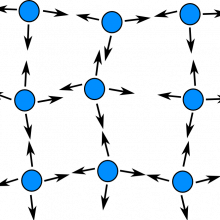
26:18 - I like the way you move
I like the way you move
with Luca Turin, Alexander Fleming Centre, Athens
Now when we smell something, it's because small molecules have travelled up our nose, and have been detected by sensors. But how exactly this detection 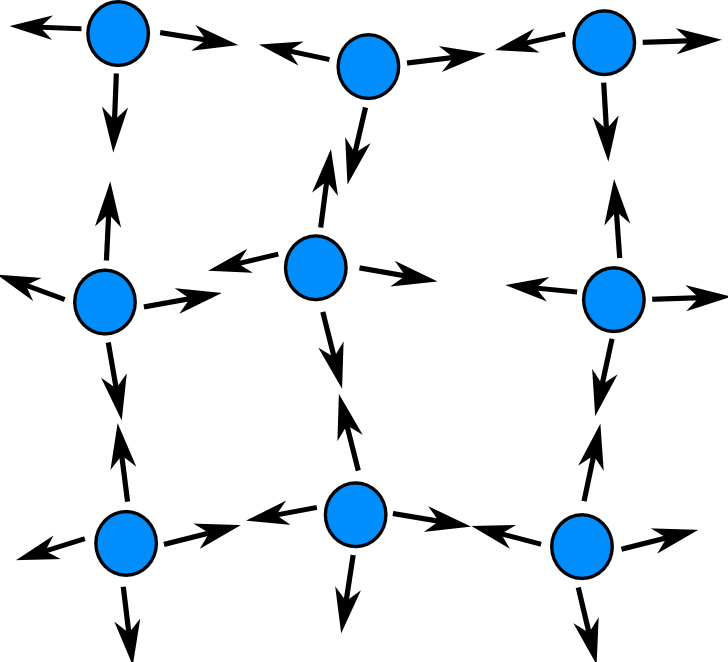 works has been a subject of some controversy. Luca Turin was one of the first to suggest that it's not the shape of a molecule, but how it moves, that affects the signals sent to our brain, and the odour we smell. Kate Lamble caught up with him to find out how the current 'shape theory' works.
works has been a subject of some controversy. Luca Turin was one of the first to suggest that it's not the shape of a molecule, but how it moves, that affects the signals sent to our brain, and the odour we smell. Kate Lamble caught up with him to find out how the current 'shape theory' works.
Luca - The prevailing theory was, and to some extent still is, that the smell of a given molecule is written into its shape. Different receptors in the nose would each feel some part of the molecule and then report to the brain so to speak. That was the prevailing view and as I said, I'm pretty sure most people would still think that way and I proposed a different theory.
Kate - What made you think that there might be something more to this idea of a lock in a key and these molecules just fitting together?
Luca - For a start, a theory is a labour saving device in a sense that if one has theory of how smell is written into a molecule and you happen to be making, let's say, smelling molecules for fragrances or flavours, you would know how to make one. You would know exactly what to put in a molecule in order for it to smell of rose or bananas, or whatever. And this is absolutely not the case. In fact, the people who make molecules make thousands and can never predict the smell. The other major problem is the fact that we can smell chemical groups. Let's take an example with SH -- the SH famously gives virtually any molecule it's in the smell of rotten eggs. How does it probe the fact that there's an SH in all of those molecules and not, for example, an OH, which would not smell of sulphur and would be of a very similar shape. So, that was the thing that really got me interested and that could not be explained by a shape theory.
Kate - So, if molecules which are so similarly shaped can smell so different, how does your theory differ from that?
Luca - Well, for a start, it's not really my theory. It was proposed originally in the 1930s by Malcolm Dyson and it was basically a very simple - how does a chemist, how did a chemist in those days identify an unknown molecule? And the answer was, we put it through an infrared spectroscope and you measure its vibrations. The vibrations were very, very distinctive and they tell you about functional groups. They tell you what's in there and they also - each molecule, because the atoms are connected differently will have a different fingerprint (so-called) part of the spectrum. So, Malcolm Dyson and others were struck by the fact that a spectroscope pretty much behaved like the nose in a sense that it gave you the same information. In those days, it was politely received and in fact, it carried on being politely received for a long time. But as we knew more about receptors and about biology in general, there seem to be this insurmountable problem that there's no way of measuring the vibrations with a receptor. What I brought to this whole thing in '96 was a straightforward biological mechanism which in fact can deliver a biological spectroscope.
Kate - And so, how do different molecules vibrate differently?
Luca - A molecule composed of, let's say, 10 atoms, has - in the case of 10 atoms, it has 24 different vibrations. If you arrange the same 10 atoms differently, you will find that the vibrations are being changed. A simple analogy of this is, if you have two metal balls of different shapes or different size and you hit them with a wooden spoon, they will make a different sound. The molecule, because of the springs connecting the atoms will have a unique vibration spectrum and if you change the connections, the spectrum changes.
Kate - We previously didn't think that the nose and these receptors could pick up these vibrations. Is it just that our understanding of how biology works has proceeded and you now think that the nose can pick up these vibrations?
Luca - Well, yes. There's been a considerable amount of interest in a sort of subfield of biophysics called quantum biology, which is the realisation that in some parts of biology, you just don't understand what's going on unless you bring in quantum mechanics. Now, the mechanism that I proposed, it's a nanoscale mechanism that involves electrons jumping from one place to another, in such a way that when they jump, they bump into the smelly molecule and make it vibrate. Then you can have a protein based system that is capable of detecting the vibrations of a molecule and that is bound to it.
Kate - And what evidence do we have for this? It's very nice to say these electrons are jumping from place to place, presumably we can't just look down a microscope and see that. So, how do you do an experiment to work out how we're perceiving smell?
Luca - You're absolutely correct -- that, in so far as we haven't been able to measure the electron movements inside smell receptors yet, much more modestly, what we were trying to do, in fact, we succeeded in doing in the last couple of years, is to show that fruit flies can distinguish from each other molecules that are identical in shape and only differ in their vibrations. The way you do that is actually very simple. You take a known molecule that has a smell -- whatever it is, X -- and you replace the hydrogens in the molecule with heavy hydrogen. Now, heavy hydrogen, also called deuterium, is exactly the same size and of course, shapes, because it's hydrogen, but it has an extra neutron in the tiny nucleus in the middle of the atom and so it's heavier. So, all the vibrations of the molecule that involve movements of the hydrogens are slowed down because the hydrogens are heavier. So, the big question is: do those two molecules smell different? And so, we found that yes, indeed, fruit flies could smell the presence of deuterium, and more recently we've done the same thing with humans using musks and we find that humans can tell them apart very easily.
Kate - You mentioned when this theory was first brought up in the 1930s, you put it that it was received politely and your first experiments were met with a lot of criticism. There was one repeat of one of your experiments that found that humans couldn't tell the difference in smell between this hydrogen and deuterium. How have you reacted to that criticism?
Luca - Well, first of all, that paper was absolutely correct it turns out. It appears that, if the molecule is small, it has -- let's say, in the case of the molecule that we're talking about, which is called acetophenone -- it has only 8 hydrogens, and it's pretty clear that if there is a difference, it's too small for humans to really detect it properly. Our results confirm that study that said that you couldn't smell the difference in that particular molecule. But we decided to simply go to a molecule that has more hydrogens, on the grounds that the effect would be larger and that's what happened. With musks that have 28 hydrogens, you find that people can smell the difference.
Kate - What future experiments do you need to do for this theory in your mind to become fully accepted?
Luca - I have absolutely no idea. Max Planck said that people don't change their mind. They just die.
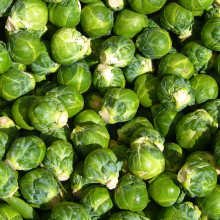
34:11 - Why some people can, but others can't
Why some people can, but others can't
with Darren Logan, Sanger Institute
There are certain smells and tastes that some people love, but others hate. Darren Logan works at the Sanger Institute in Cambridge, looking into the genetics underlying responses to smell. He spoke to Ginny Smith.
Ginny - Why do different people respond differently? Why do I love Brussels sprouts and 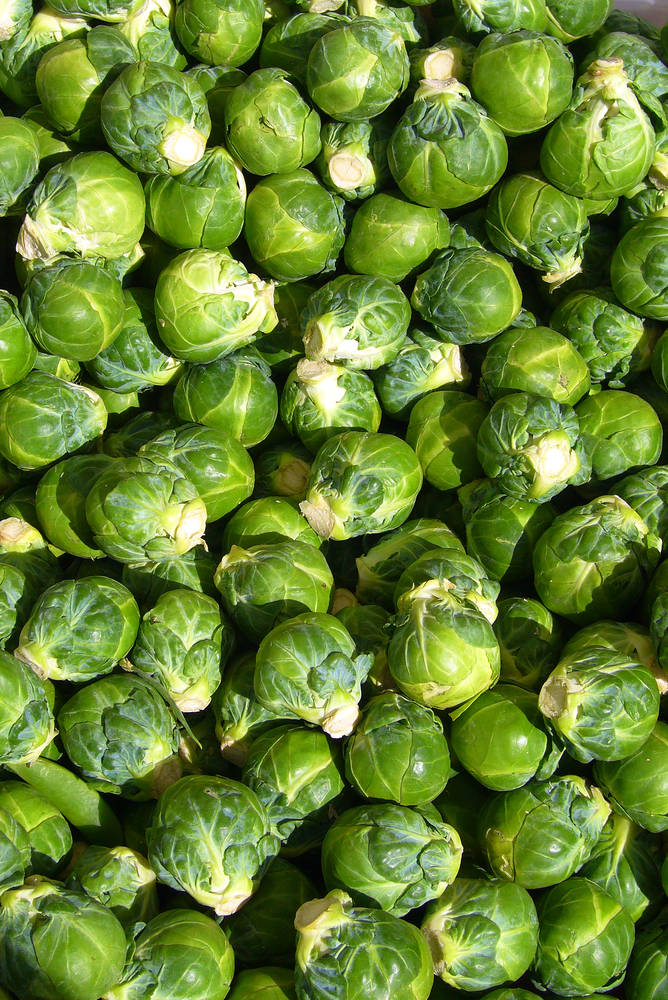 Kate hates them?
Kate hates them?
Darren - Well, it goes down to your genes in the end. We all have olfactory receptor genes and these are the genes that encode the proteins that detect different smells. It turns out that we actually have huge numbers of variants of these throughout the population. And so, if I have a copy of a gene, and you have a copy of a gene that differs, perhaps I can smell it and you can't. Therefore, I will develop a preference for it and you won't because you can't smell it. When we add this variance across hundreds of genes that are involved in smell, what it ends up meaning is that we all smell the world slightly differently from each other.
Ginny - So, does that mean that we've actually all got slightly different receptors in our noses?
Darren - Yes and that's actually something that has only been realised in the last few years or so. The level of variance with these genes is that they're really astounding. In fact, they're perhaps the most variable genes that humans have apart from our immune system.
Ginny - How do you go about studying something like this?
Darren - It's actually quite hard. So, we tend to study model organisms, largely worms, flies and mice. The reason for this is we can train them to respond to different smells. So, when we have different versions of these genes in different animals, we can ask when the animal can smell it, it can be trained to that smell, when it can't it cannot be trained to the smell. And therefore, by asking how they respond to different smells, we can work out what version of the gene they have.
Ginny - So, does that mean you can actually breed mice that can and can't smell different things?
Darren - Absolutely, yeah. In fact, we've done so, but we didn't actually mean to. So, we have maybe 20 or so inbred lines of mice that we commonly use around the world. What we're realising is that just by accident, some of those can and can't smell certain smells.
Ginny - What kind of smells are there that are controlled just by one or two genes?
Darren - A famous example, one of the very earliest ones found in 1977, is one of the most commonly used lab mice strains called Black 6. It turns out it can't smell a chemical called isovaleric acid. Isovaleric acid is the smell of sweaty gym socks or blue cheese. So, there's this little mouse strain that can't smell cheese. And so, in my lab, we're actually working at the moment to try and identify the gene responsible for this.
Ginny - That sounds like quite a good gene to have, if you live with me who leave their socks lying around.
Darren - Absolutely. And actually, humans also and so these are called specific anosmias which is like we heard earlier, and general anosmia is when we can't smell anything. A specific anosmia is when we can't smell one thing. Humans also have a specific anosmia to isovaleric acid. So there is indeed people out there who can't smell such things.
Ginny - Oh, lucky people. Now, I think you actually brought with you some little vials of different smells that some of us should be able to smell and some shouldn't based on genetics. Can we have a go?
Darren - You can, yes. I didn't bring you isovaleric acid because it smells so bad that it would stink out your studio. I did bring another thing. And so, I'll pass it around and see if one of you can identify what the smell is.
Kate - Let me have a go. I can definitely smell something. It's quite sweet, but I wouldn't be able to pinpoint it. Can I ask? I have what my family terms the famous Lamble nose. If I have room for extra senses, am I at an advantage here over Ginny?
Darren - Perhaps, yeah. I mean, there is a structural element too. So, if you have a good airflow through your nose, for example, and you can often smell better, people who have deviated septums often struggle to smell. So, I can smell it from here actually.
Kate - Can you pinpoint it?
Ginny - I can definitely smell something. It's kind of sweet, like sweet shop candy floss type things. It's quite pleasant.
Darren - You're close. It is actually the smell of beta ionone which is the distinctive smell of Parma Violets.
Kate - Oh, yeah. Now, you tell me. I can pinpoint it to the '70s sweet that you don't want to eat too much of.
Darren - Exactly. So, interestingly with this smell is that just this year in fact, a really beautiful study by a guy called Jeremy McRae who's a colleague of mine at Sanger. They showed that 18% of the British population can't smell that or have no ability to smell that whatsoever. But also they showed, in a really nice paper, that people that can smell this have a greater preference for air fresheners or detergents that have this chemical in it than those who can't smell it. So now we're beginning to understand that our ability to smell different chemicals also influences our choice for consumer products.
Ginny - So, the fact that we could all smell that means that we must all have that same gene.
Darren - That's correct, yeah.
Ginny - And did you bring another one?
Darren - I did. I brought another one. This one is perhaps slightly easier. Pass this one along.
Kate - That's very, very strong to me. I'm not really good at pinpointing what they are. They should have a new game like Pictionary for what it is.
Ginny - Oh, yeah. That's really...
Kate - It's really unpleasant.
Ginny - No, that's pollen-y. That reminds me of hay fever.
Kate - Like grass.
Darren - Absolutely, yes. So, this is something called cis-3 hexenal, also known as leaf alcohol, and it's the smell of cut grass. It's very distinctive, and 3% of British people can't smell that. So again obviously, you two probably can.
Ginny - Super smellers!
Kate - But you associate it with something negative like hay fever.
Ginny - Yeah, that's definitely an unpleasant smell to me.
Darren - That's interesting because often it's used - some people believe that cis-3 hexenal has some sort of innate meaning to us and so, it's used often in aromatherapies to relax people.
Kate - Apart from Ginny.
Ginny - No, it makes me think that my eyes are going to start itching and my nose is going to start streaming even though it's not. But it definitely makes me think of that. Fascinating! So, why do we have these differences? Do we have any idea?
Darren - So, there are two theories. One is that there is some sort of evolutionary advantage for certain smells or not, and we don't actually have good evidence for that yet, and perhaps because we haven't studied enough of them. The other is it's something called genetic drift. Basically, there's no real advantage to smell or not smell something. So over time, the genes mutate and change, so some people can and some people can't.
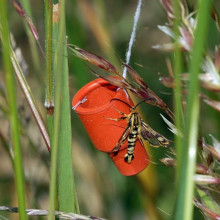
39:56 - Sniffing Pheromones
Sniffing Pheromones
with Greg Jefferis, MRC Laboratory of Molecular Biology
Smell is important to allow us to taste our food, and can even trigger memories. But 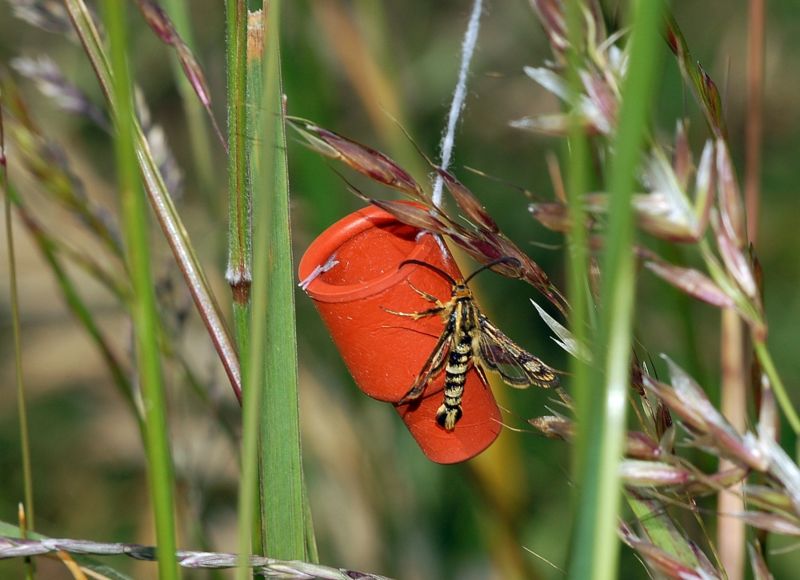 in some animals, special molecules called pheromones can also trigger certain types of behaviour, such as mating. Kate Lamble spoke to Greg Jefferis from the Cambridge Medical Research Council Laboratory of Molecular Biology, or the MRC LMB, investigates the pathways between smell and behaviour in the fruit fly
in some animals, special molecules called pheromones can also trigger certain types of behaviour, such as mating. Kate Lamble spoke to Greg Jefferis from the Cambridge Medical Research Council Laboratory of Molecular Biology, or the MRC LMB, investigates the pathways between smell and behaviour in the fruit fly
Greg - A pheromone is, I guess, a specialised smell molecule that's used to communicate between individuals of a species. So, it's produced by one member of a species and used to signal for example to a member of the opposite sex, is one of the classic cases, so sex pheromones. So, there's normally a specialised detection process as well and we're particularly interested in what happens within the brain when those odours are detected.
Kate - If we looked at the pheromones, would it look any different from a normal smell molecule?
Greg - No, not particularly and in fact, there are some pheromones which can be detected by our main olfactory epithelium, so the nose, that can have very specific meanings for certain species.
Kate - So, if they don't look any different, I suppose it's about how it is received. How does smelling a pheromone get translated into behaviour in animals?
Greg - So, like any odour, the first thing is that this small molecule needs to diffuse up to a receptor at the top of your nose and actually bind to a receptor there. And one of the key advantages of using insects is that these receptors and molecules have been identified for some time. So, once it binds to the receptor it then makes the neuron on which that receptor sits electrically active and so, you've turned this chemical binding into an electrical signal which can then talk to the rest of the brain and trigger behaviour responses.
Kate - And you study this in fruit flies. Why are fruit flies such a great animal to look at this in?
Greg - So, various reasons. There are lots of, people who have been studying fruit flies for years. Obviously, there are all sorts of powerful tools. There's also an issue of complexity. Fruit flies have only 50 receptor genes whereas a mouse has 1300 olfactory receptor genes. So, it's a bit easier to find the receptor for a particular smell in a fruit fly than a mouse. Also, once you found the receptor, it's a lot easier to do experiment in a fly to try and figure out what the fly's brain is doing with this information and that's really the kind of work that my lab is doing.
Kate - So, what pheromones do fruit flies react to?
Greg - So, the one that's been best studied is a pheromone called cva cis-Vaccenyl Acetate. So, this is a molecule that's produced by male flies and signals to both males and females. So, it seems to be attractive for females. It makes them more ready to mate with the male, but it's repulsive for males. It actually makes them more aggressive, more likely to fight with each other. So, this is interesting, right? It's the same molecule but different effects on the two sexes.
Kate - That is interesting. We've got an email in from Teo Gibson who asks us, "Can humans smell pheromones or is it just a myth?"
Greg - I think it partly depends on your definition of pheromone. So, I think one of the big points at least classically has been that the pheromone should be a molecule that has some kind of unconditioned response. That is that the first time you smell it, it's going to make you produce some kind of behaviour and you're always going to produce that behaviour when you smell the pheromone. Now of course, we expect most things to be highly contextual especially in humans, there are lots of signals that interact and also, that there's lots of learning. Most of the sort of work on human pheromones has found it very hard to tease apart sort of learned associations from something that might be innate as it were.
Kate - I can imagine with a human, so much of will comes into it as well, that a fruit fly would automatically respond to something whereas we're able to stop ourselves to a certain extent. Teo goes on to say, she read an article a while back about a woman judging a man's breed worthiness based on the smell of a sweaty shirt. Is that true?
Greg - So, maybe we should bring in Darren (Logan from the Wellcome Trust Sanger Institute) here. I think he's got lots of experience at least in dealing with that kind of question, if not with smelling smelly t-shirts, but...
Darren - So, it is true that the study was done that showed that people prefer the smell of people who are unrelated to them at certain of their menstrual cycle, a woman does. This was classically done by making people wear no toiletries and wearing a white t-shirt and sleeping in that t-shirt and then sniffing it. It's not the most pleasant of experiments. So, there's quite a long history of these types of experiments. Indeed, there appears to be some sort of effect. Quite how it works and what people are smelling, we don't yet know.
Ginny Smith - Now Darren I think you told me earlier that you actually have an example of a human pheromone with you. Is that right?
Darren - So this is a chemical called androstenone and it's first identified in the saliva of male pigs and it drives female pigs wild. Subsequently, it was found in male sweat and so, it was studied because of its pheromonal properties in a pig as a putative human pheromone. What's really interesting about it is it smells very differently to different people. So, if you'd like to have a sniff and tell me if you can smell it...
Kate - This is one of those quizzes that tells you about your personality. You don't want to get it wrong
Darren - So, a lot of people can't smell it at all.
Kate - I can smell something. It's not driving me wild. It's quite sweet, but quite subtle to me.
Darren - So, that's interesting. What about you Ginny?
Kate - He's definitely worked something out about my personality that I don't want to be revealed on air.
Ginny - I'm not smelling anything.
Kate - You can't smell anything.
Ginny - Nothing at all.
Darren - So, most people describe this as urinous or sickening or sweaty in some way. But a small proportion of people describe it as sweet and a lot of people also can smell it. I can't smell it, and so we have one person that can smell it that quite likes it. I think the other interesting thing about this chemical is irrespective of its potential pheromonal properties is that it is perhaps the most variable odour that has the most variable responses to smell to it. So, whether it's a pheromone, the jury is out I would say, but it certainly is an interesting smell.
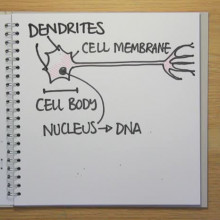
Can nerve damage affect smell?
Kate Lamble - Peter just called in. He wants to know to what extent nerve damage affects your sense of smell. He banged his head once which he says resulted in a temporary loss of smell and a permanent aversion to the smell of vinegar. What's going on there?
Darren Logan - So, the effect of damage to your brain after a head injury often lose the sense of smell and that can be for two reasons. Firstly, you can actually have a shearing of the olfactory neurons which can be quite nasty and can often lead to permanent loss. Secondly, you can have, essentially, bruising of the front of your brain when it hits the front of your skull because your brain is soft and your skull is hard. So, you've got a very jarring motion, you can get bruising and that can either be permanent or temporary smell loss. Why he lost it to vinegar? I have no idea.
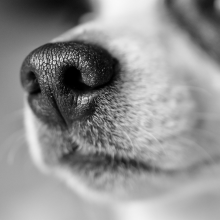
Why do we stop noticing smells?
Greg Jefferis - So, pretty much, any sensory system you can have adaptation and in fact it can be at various levels. People often give the example in introductory classes - your clothes, you tend to forget you're wearing them. Obviously, it will be bad news if you weren't wearing them, but you do tend to forget that sensory experience, after a while, you get used to it. The same with your eyes, you'll get used to the light level in a particular environment and their adaptations within the sensory cells. So, the same is true in most olfactory receptors. And there are also mechanisms downstream within the brain that will modulate your response to particular odours as well.

Can you smell fear?
Darren - So, animals certainly can smell fear and there are such things as kyromones which are like pheromones but work between species. So, some predator odours for example act as kyromones so that their prey are innately afraid of them. Whether humans could smell fear, I don't know. However, we certainly do sweat and sort of more acrid smelling sweat when we're fearful and perhaps that's what people mean when they say they can smell fear.

How do dogs sniff out cancer?
Darren - So, dogs have incredibly well-developed sense of smell. In fact, dogs and rats we think are perhaps the best smellers in the animal kingdom. And so, a number of groups recently have been using this sort of very sensitive nose that dogs have to see if we can use them to detect chemical patterns that are associated with certain diseases. It's been done prostate cancers and also ovarian cancers with women. It does appear dogs can detect differences in smells in urine after people have cancer. Quite what the chemical is the dogs are sensing we don't know, so we can't set up a diagnostic screening yet with these chemicals.
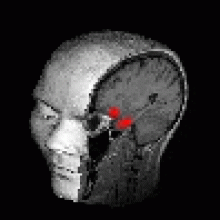
Why do smells trigger memories?
Greg Jefferis - I think there's a bit of debate there. There's certainly a fairly direct connection between the olfactory system, starting at the nose, and parts of the brain involved in storing and recalling memories. Whether that very direct connection is important to this thing that we often feel or hear about, of odours triggering memories very selectively, I'm not so sure.
Another view would be that smells are just very specific things and that's why they are able to trigger a very specific memory, picked out from everything that's in your brain. So I guess there are two possible ideas there.
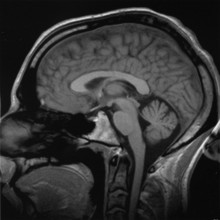
Why do I overlook the obvious?
So why could Juliet not find her glasses? She swears she can still see without them, so why did she overlook finding them? Professor Nilli Lavie from University College London.
Nilli Lavie - This is because people experience the phenomenon that we term load induced blindness, when the brain is overloaded. Multi-tasking will often overload the brain and this will result in some parts of the brain not being able to respond to the environment temporarily.
Hannah - So Juliet overloaded her thoughts whilst looking for her glasses. But what was going on in her brain to mean she couldn't see the thing that she was specifically looking for?
Nilli Lavie - If a certain information is there it's not enough that the eye can see it. It's also important that the information is registered in the visual cortex. However, in conditions of overload, the visual cortex will temporarily not be able to respond to the visual environment and this will result in the experience of blindness. Of course this is not real blindness, but because the visual cortex does not register the pair of glasses in the example, we experience as if cortical form of blindness.
Hannah -So information overload, leading to visual cortex blindness. Thanks Juliet for getting in touch with that question and Nilli for the answer










Comments
Add a comment